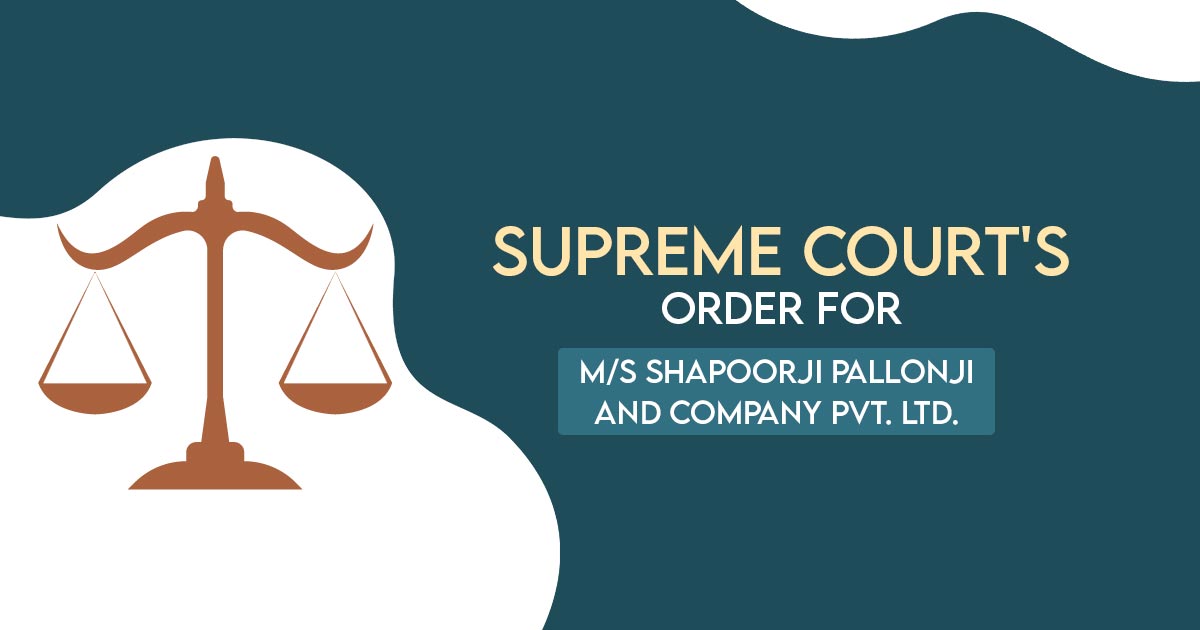
In a noteworthy ruling, the Supreme Court has determined that the Indian Institute of Technology and the National Institute of Technology will fall within the purview of the Mega Service Tax Exemption Notification originally issued by the Department of Revenue in 2012 (subsequently amended and clarified by following notification in 2014).
The case centred around the service tax obligations of M/s Shapoorji Pallonji and Company Pvt. Ltd. in connection with the contract work they performed for IIT-Patna and NIT-Rourkela.
Read Also: TN AAR: 18% GST Rate Applies on Civil Construction Delivered to Madras IIT
In 2012, the Department of Revenue, by the authority granted under Section 93 of the Finance Act, 1994, released a Mega Service Tax Exemption Notification, which delineated the services exempt from service tax. This notification underwent subsequent amendments on January 30, 2014.
According to this notification, services extended to a “governmental authority” were granted exemption from service tax. The term “governmental authority” was defined by Clause 2(s) of the 2014 notification as follows:
“governmental authority” means an authority or a board or any other body;
(i) set up by an Act of Parliament or a State Legislature; or
(ii) established by Government,
with 90% or more participation by way of equity or control, to carry out any function entrusted to a municipality under Article 243W of the Constitution.”
The High Courts of Patna and Orissa, in their interpretation of the clause, concluded that service tax did not apply to contracts executed for the IIT and the NIT.
The Department contested the judgments of the High Courts by referring to the last line in the definition clause, which stipulates a condition that requires a 90% or higher level of government participation through equity or control. According to the Department’s argument, an institution couldn’t be classified as a “governmental authority” solely based on its establishment through a statute; in addition to that, there must be a 90% or greater degree of government control.
The case, presided over by a bench consisting of Justices S. Ravindra Bhat and Dipankar Datta, hinged on the interpretation of the word “or” in-between sub-clauses (i) and (ii) of the aforementioned definition and the significance of the use of a semicolon after clause (I).
Read Also: TN AAR: School Transportation Fees Eligible for Exemption from GST
Justice Datta, in authoring the judgment, affirmed that the term “or” in the definition clause should not be construed as “and,” as contended by the Department, due to the straightforward and unambiguous language used.
“Going by the golden rule of interpretation that words should be read in their ordinary, natural, and grammatical meaning, the word “or” in clause 2(s) clearly appears to us to have been used to reflect the ordinary and normal sense, that is to denote an alternative, giving a choice; and, we cannot assign it a different meaning unless it leads to vagueness or makes clause 2(s) absolutely unworkable,” the judgment remarked.
The judgment observed that the use of punctuation is even pertinent in interpreting the meaning. Referring to the Supreme Court judgment in Kantaru Rajeevaru vs. Indian Young Lawyers Association & Ors, the Court said, “punctuation, via a minor element, may be resorted to for the purpose of construction.”
The Court, use of a semicolon is not a trivial concern however a deliberate inclusion with a clear purpose to differentiate it from sub-clause (ii). While there is a semicolon after sub-clause (i), sub-clause (ii) closes with a comma. In this backdrop, the Court noted:
“This essentially supports the only possible construction that the use of a comma after sub-clause (ii) relates it with the long line provided after that and, by no stretch of imagination, the application of the long line can be extended to sub-clause (i), the scope of which ends with the semicolon. We are, therefore, of the opinion that the long line of clause 2(s) governs only sub-clause (ii) and not sub-clause (i) because of the simple reason that the introduction of semicolon after subclause (i), followed by the word “or”, has established it as an independent category, thereby making it distinct from sub-clause (ii). If the author wanted both these parts to be read together, there is no plausible reason as to why it did not use the word “and” and without the punctuation semicolon.”
Also, the court specified that the department could not have quoted any instance of such legal authorities that have 90% or exceeding government control. An interpretation that makes the provision ineffective could not be chosen, it said.
“Merely because the statute does not yield intended or desired results, that cannot be reason for us to overstep and cross the Lakshman Rekha by employing tools of interpretation to interpret a provision keeping in mind its outcome. Interpretative tools should be employed to make a statute workable and not to reach to a particular outcome.”
The plea gets dismissed through such observations ensuring the opinion that the High Courts of Patna and Orissa have chosen.
| Case Title | M/s Shapoorji Pallonji and Company Pvt. Ltd. vs Union of India |
| Citation | CIVIL APPEAL NO. 3991 & 3992/2023 |
| Date | 13.10.2023 |
| Supreme Court Order | Read Order |